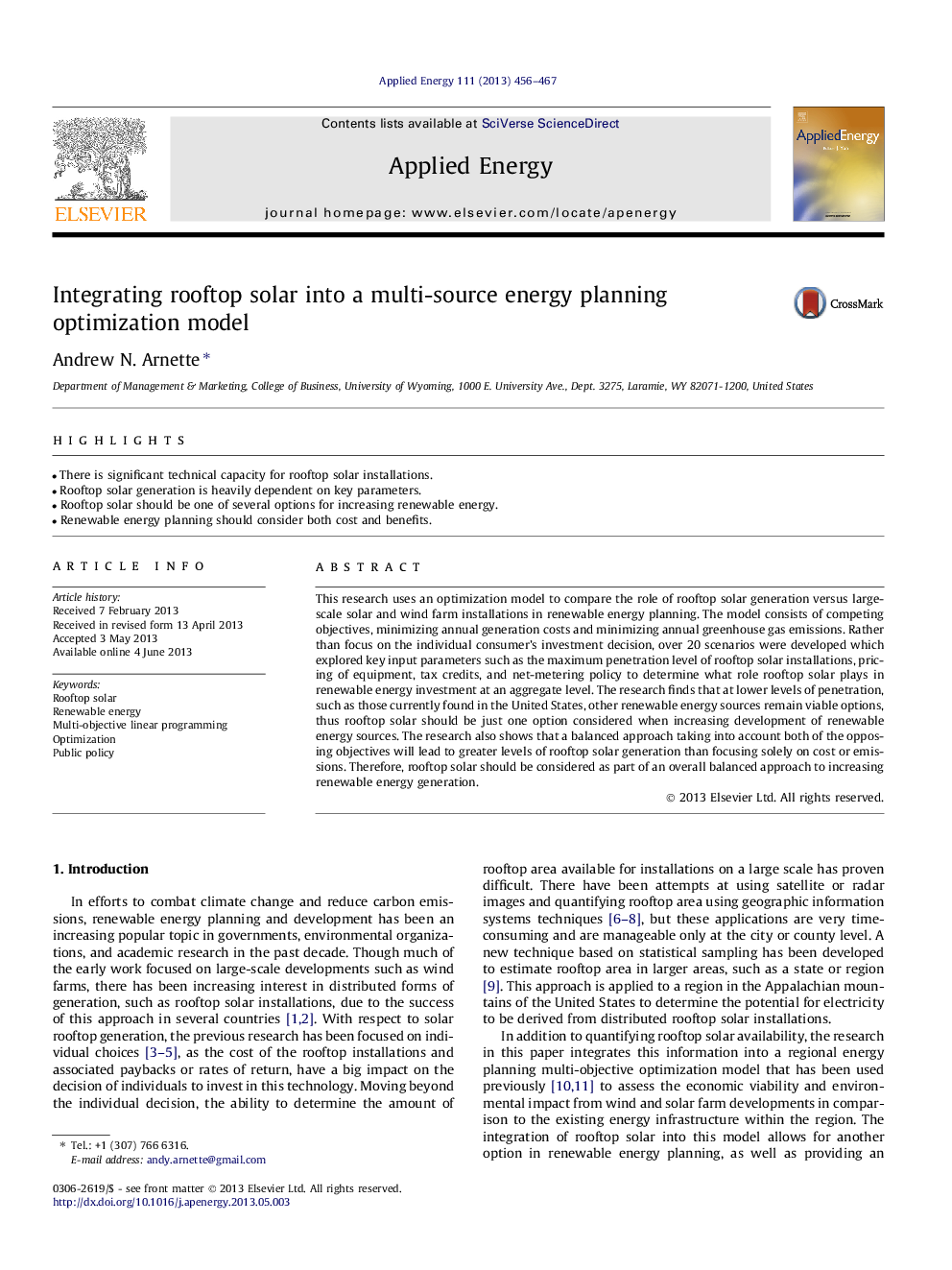| Article ID | Journal | Published Year | Pages | File Type |
|---|---|---|---|---|
| 6692360 | Applied Energy | 2013 | 12 Pages |
Abstract
This research uses an optimization model to compare the role of rooftop solar generation versus large-scale solar and wind farm installations in renewable energy planning. The model consists of competing objectives, minimizing annual generation costs and minimizing annual greenhouse gas emissions. Rather than focus on the individual consumer's investment decision, over 20 scenarios were developed which explored key input parameters such as the maximum penetration level of rooftop solar installations, pricing of equipment, tax credits, and net-metering policy to determine what role rooftop solar plays in renewable energy investment at an aggregate level. The research finds that at lower levels of penetration, such as those currently found in the United States, other renewable energy sources remain viable options, thus rooftop solar should be just one option considered when increasing development of renewable energy sources. The research also shows that a balanced approach taking into account both of the opposing objectives will lead to greater levels of rooftop solar generation than focusing solely on cost or emissions. Therefore, rooftop solar should be considered as part of an overall balanced approach to increasing renewable energy generation.
Related Topics
Physical Sciences and Engineering
Energy
Energy Engineering and Power Technology
Authors
Andrew N. Arnette,
